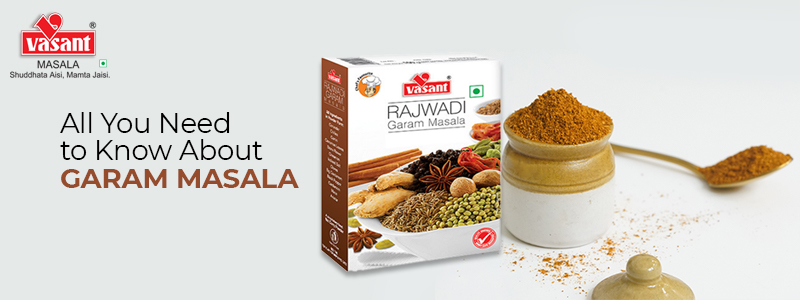
Garam masala, which literally translates to "hot spice," is one of the most commonly used spice mixes in Northern Indian cooking. Authentic garam masala contains around 10 different warming spices. All of the spices are roasted to perfection and crushed into a fine powder, which is then added to a variety of delicacies to impart a somewhat spicy and robust flavour. In Ayurveda, the word 'garam' means 'heating the body,' since the spices in garam masala are considered to elevate the body temperature. This widely used Indian spice blend adds flavour to every meal, and the spices used in the masala vary by location.
Table of Contents
- What is Garam Masala?
- Garam Masala: Ingredients
- Garam Masala: Uses
- Garam Masala: Benefits
What is Garam Masala?
Garam masala is an Indian spice mix that is widely used in Indian cooking. Garam masala spices are generally roasted first to bring forth more flavour and aroma, then ground. The term masala simply means "spices," and the adjective garam means "hot," although garam masala does not always suggest a spicy combination. The powdered version is generally gluten-free, vegan, and vegetarian, although the garam masala paste must be checked on the label to determine what is contained. Garam masala is a spice mix that may be found in a variety of Indian foods, including curries, lentil dishes, and soups.
Garam Masala: Ingredients
There is no one-size-fits-all recipe for garam masala. The ingredients change depending on the location and the tastes of each chef. This widely used spice mix adds flavour to every meal, and the spices used in the ground garam masala vary by location. Black and white peppercorns, cloves, bay leaves, long pepper, black cumin, cumin seeds, and cinnamon are some of the most common ground spices used in a traditional North Indian kitchen. Along with these spices, mace and star anise are often found in most South Indian cuisines.
We at Vasant Masala use the following spices in our Garam Masala powder:
- Coriander Seeds
- Chilli
- Cassia Leaves
- Kothgal
- Cumin
- Black Pepper
- Anistar
- Fennel Seeds
- Cassia
- Turmeric
- Stone Flower
- Big Cardamom
- Nutmeg
- Clove
- Mace
- Cardamom
- Black Salt
Garam Masala: Uses
Garam masala is generally used at the end of the cooking process to season the food and enhance the aroma. To finish the meal, you can sprinkle a little more garam masala. Garam masala is traditionally prepared fresh from individual spices and used within a few days. It's not always the only spice or seasoning in a dish.
Garam Masala is used to season main courses- Whether you're cooking with meat, turkey, or veggies, this spice will add a unique flavour to your dish. Toss and coat the meat and veggies with garam masala before cooking for more flavour. Allow the ingredients to absorb the flavour for 30 minutes.
Sprucing Up Side Dishes: Garam masala goes particularly well with veggies. Combine all of the veggies in a large mixing bowl. Then drizzle 1–3 teaspoons of olive oil over the veggies to help the spices stick.
Desserts with Garam Masala: For a gathering of people, cupcakes are a great dessert choice. Garam masala may be used in the ordinary cupcake batter, or you can look for recipes that incorporate the spice with other tastes. You can also add it to cupcake icing to give it a distinct taste.
Garam Masala: Health Benefits
Given the number of spices used to create the spice mix, you can imagine how nutritious it would be. It should contain more than five spices, and each spice may have health-promoting characteristics that you should be aware of.
- The real benefit of using garam masala in your cooking is that it increases hunger and improves digestion by encouraging the release of gastric juices in the stomach.
- The spices in garam masala are high in phytonutrients, which aid in metabolism.
- Garam masala is loaded with antioxidants, which help prevent skin conditions and combat inflammation.
- Garam masala contains carminative qualities that assist with bloating, gas, and even nausea, in addition to improving digestion.
- The combination of cloves and cardamom in garam masala makes it effective in treating foul breath.
- Spices such as cloves, cinnamon, and cardamom have compounds that can lower and control cholesterol levels in the body.
Also Read: Chaat Masala – A Flavorful Spice Mix

